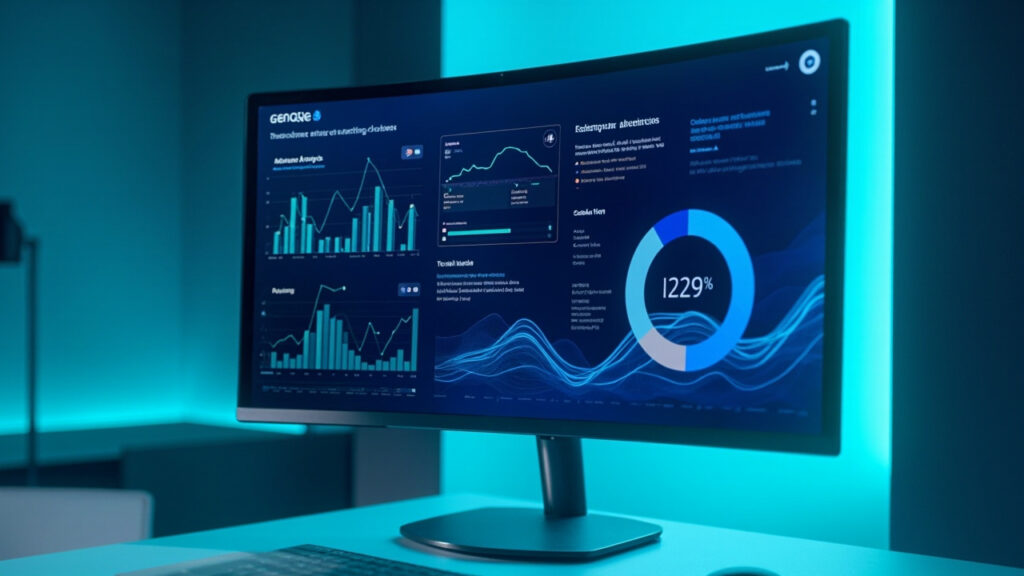In the rapidly evolving world of software development, maintaining high standards of quality is more critical than ever. Traditional testing methods, while foundational, often struggle to keep pace with the complexities and rapid delivery expectations of modern applications. This comprehensive exploration will delve into powerful testing techniques that not only enhance efficiency but also ensure robust software quality. From manual strategies to cutting-edge AI-driven tools like GenQE, we’ll explore how integrating innovative solutions can transform the testing landscape.
Software testing is an indispensable phase of development that identifies defects, ensures functionality, and enhances user satisfaction. However, as software systems grow in complexity, the traditional approaches to testing are becoming less effective, paving the way for more sophisticated and scalable solutions. In this article, you will discover how advanced testing techniques, including AI-powered platforms, can help overcome common challenges faced by quality assurance teams.
By the end of this discussion, you will gain insights into various testing methodologies, understand the significance of embracing AI in testing, and see how tools like GenQE can be subtly integrated into your testing strategy to drive efficiency and effectiveness.
The Evolution of Software Testing

Software testing has undergone significant transformations over the decades, evolving from basic manual testing to more sophisticated automated and AI-powered techniques.
Historical Overview
In the early days of software development, testing was often performed manually. Testers would manually execute all possible scenarios to find bugs, a process that was both time-consuming and prone to human error. As software systems became more complex, the need for more efficient and effective testing methods became apparent.
Transition to Automation
The introduction of automated testing marked a significant shift in the testing paradigm. Tools like Selenium and QTP (QuickTest Professional) allowed testers to automate repetitive tasks, significantly speeding up the testing process and reducing human errors. However, even with automation, challenges such as maintenance of test scripts and managing large test suites remained.
The Need for Advanced Techniques
As applications continue to grow in complexity and scale, even advanced automated testing strategies can fall short. This has led to the exploration of more powerful testing techniques, including the integration of AI and machine learning, to further enhance the effectiveness and efficiency of testing processes.
Understanding Powerful Testing Techniques

Exploring the landscape of powerful testing techniques reveals a variety of methods designed to enhance efficiency and coverage. Each technique has its strengths and is suited to different testing scenarios.
Static vs. Dynamic Testing
Static testing involves examining the code without executing it, such as reviewing code or performing static analysis. Dynamic testing, on the other hand, involves executing the code and observing the output. Both methods are crucial and complement each other, providing a thorough validation of both the code’s behavior and its structure.
Exploratory Testing
This technique relies on the testers’ experience, intuition, and creativity. Testers explore the software without predefined test cases, which allows unexpected errors to be caught. It is particularly effective in the early stages of development, where formal test cases might not yet be defined.
Regression Testing
Essential in ongoing development projects, regression testing ensures that new changes haven’t adversely affected existing functionalities. Automated regression testing can be particularly powerful, allowing for frequent and thorough testing without additional time costs.
Performance Testing
Performance testing is crucial for applications that are expected to perform under specific load conditions. Techniques like stress testing, load testing, and spike testing fall under this category, each designed to evaluate different performance metrics.
Leveraging AI in Testing: The Role of GenQE

Integrating AI into testing processes offers transformative potential. AI-powered tools like GenQE can automate complex tasks, predict potential issues, and provide deeper insights, revolutionizing how quality assurance is performed.
AI-Driven Test Generation
GenQE leverages AI to automate the creation of test cases. By analyzing software requirements and user behavior, it significantly reduces the dependency on manual test case design, enhancing both coverage and efficiency.
Enhancing Test Execution
AI algorithms prioritize and execute test cases based on risk analysis. This not only optimizes testing efforts but also ensures that high-impact areas receive the attention they deserve. Tools like GenQE intelligently manage these tasks, streamlining the testing process.
Self-Healing Test Scripts
One of the standout features of AI-driven testing tools is their ability to adapt to changes. For instance, GenQE can automatically update test scripts when UI elements change, significantly reducing maintenance efforts and minimizing disruptions.
Comprehensive Test Coverage with AI

Achieving comprehensive test coverage is a challenge in complex software environments. AI-powered tools can effectively address this by ensuring thorough testing across various platforms and environments.
Multi-Platform Compatibility
Tools like GenQE provide extensive coverage not just over web and mobile platforms, but also APIs and cloud environments. This ensures applications function seamlessly across different devices and operating systems, a crucial factor in today’s interconnected world.
AI-Powered Defect Detection
By leveraging machine learning, platforms like GenQE can detect anomalies and potential defects early in the development cycle. This proactive approach helps prevent critical issues from reaching production, thereby enhancing the software’s reliability and user satisfaction.
Integration with DevOps and CI/CD

Seamless integration with DevOps practices and CI/CD pipelines is essential for modern testing tools. GenQE exemplifies how AI-powered testing can be embedded into these processes to enhance continuous testing and deployment.
Enhancing Continuous Testing
Continuous testing is vital for DevOps, providing immediate feedback on the impact of changes. AI-powered tools like GenQE integrate smoothly with CI/CD tools such as Jenkins, GitHub Actions, and Azure DevOps, automating and optimizing testing within these frameworks.
Case Study: Improving Workflow Efficiency
Consider a scenario where a software development team integrates GenQE into their CI/CD pipeline. The AI capabilities of GenQE automate and prioritize test cases, significantly reducing the time and effort required for testing. This integration not only speeds up the release process but also improves the software quality by catching defects early.
Advanced Analytics and Reporting

Data-driven decision-making is pivotal in software development. AI-enhanced testing tools offer advanced analytics and reporting capabilities that provide deep insights into software quality and testing efficiency.
Real-Time Insights and Dashboards
With GenQE, teams receive detailed dashboards that offer real-time insights into test results, software quality trends, and more. These tools help teams make informed decisions quickly, adapting to issues and improving their strategies continually.
AI-Driven Recommendations
AI-driven recommendations can guide teams on areas that require more focused testing, potential optimizations in the testing process, and strategies for improving overall software quality. These insights are crucial for maintaining a competitive edge in software development.
Conclusion: The Future of Software Testing

As we’ve explored, powerful testing techniques and AI integrations like GenQE are reshaping the landscape of software quality assurance. These advancements not only address the limitations of traditional methods but also offer a scalable, efficient approach suited to the demands of modern software development.
Organizations that embrace these innovations are better positioned to enhance their software quality, reduce costs, and accelerate their development cycles. For those looking to stay ahead in the competitive field of software development, exploring and integrating these powerful tools and techniques is not just an option—it’s a necessity.
Explore the future of software testing with tools like GenQE and transform your quality assurance processes.
Discover More Innovative Solutions
Want to learn more about the tools and technologies discussed in this article? Explore how these innovations can be tailored to your specific needs and workflow requirements.
Our team of experts is available to answer your questions and provide personalized insights into how modern solutions like GenQE can address your specific challenges.